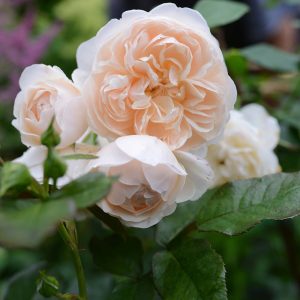Description
Lychnis viscaria, commonly known as sticky catchfly or red campion. It is an herbaceous perennial that produces spikes of bright red, star-shaped flowers that appear in the late spring and early summer. The plant grows to about 50-75 cm (24-30 inches) tall and has a similar spread. The leaves are green and lance-shaped. ‘Splendens’ is hardy and it prefers full sun to partial shade and well-drained soil. It is a great choice for cottage gardens, wildflower meadows, and mixed borders. The red flowers are also a great contrast to other perennials with different colored flowers. It can be propagated by seed or by division in the spring. It is also a popular choice for cut flower arrangements. It is easy to care for, requires minimal maintenance and it is deer resistant.
Key Facts
- Common Name(s):German catchfly ‘Splendens’
- Hardiness:Fully hardy through most of the UK
- How big will I get? Lychnis viscaria ‘Splendens’ can grow to a height of 0.5m and a spread of 0.5m.
- Did You Know That:The name Lychnis comes from the Greek word lychnos which means lamp, as the plant was often used in medieval times to make oil for lamps?
Plant Calendar
A rough guide to how this plant will change through the year.
| Jan | Feb | Mar | Apr | May | June | July | Aug | Sept | Oct | Nov | Dec | |
| Flowering Time |  |
 |
||||||||||
| Foliage Colour |  |
 |
 |
 |
 |
 |
 |
 |
 |
| J | F | M | A | M | J | J | A | S | O | N | D |
 |
 |
||||||||||
 |
 |
 |
 |
 |
 |
 |
 |
 |
Care Guide

Soil Requirements
Lychnis viscaria ‘Splendens’ is a versatile plant and can cope with wet or drier soils, but prefers there to be decent drainage. This plant is not tolerant of alkaline soil, it requires either a neutral or acidic soil to grow.

Best Position
Lychnis viscaria ‘Splendens’ prefers a sheltered position and is perfect for darker areas of your garden it likes either full or partial shade.

Maintenance
Lychnis viscaria ‘Splendens’ should be deadheaded regularly to promote the production of new flowers, it can then be cut back hard once the flowering period is over, this will help to promote plenty of fresh growth the following Spring.

Pest, Diseases and Wildlife
Lychnis viscaria ‘Splendens’ can have problems with slugs and aphids, and it tends not to have problems with diseases. It is not considered to be toxic.







